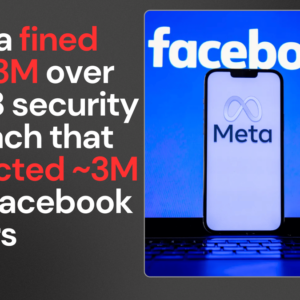Ever feel like your online security is a fortress with cracks? This guide will help you fortify it step by step! Cybersecurity may sound intimidating, but don’t worry we’ve got your back!
What is a Cybersecurity Strategy, and Why Do You Need One?
Think of cybersecurity as a fort. Without strong walls, guards, and a solid plan, it’s easy for attackers to get in! A good cybersecurity strategy is key to keeping your data safe. With a cyberattack happening every 39 seconds, ignoring security can cause serious problems for your business.
A multi-layered approach is crucial. Just like a fort has multiple defenses walls and guards your cybersecurity strategy should incorporate various protective measures to safeguard against different types of threats.

The 3 Lines of Defense in Cybersecurity
Understanding the lines of defense in cybersecurity is key to building secure systems. Here’s a breakdown of each line:
1. Preventive Measures
Preventive measures are your first line of defense. This includes:
- Firewalls: Act as barriers between trusted internal networks and untrusted external networks.
- Antivirus Software: Protects against malware and viruses.
- Access Controls: Ensure that only authorized users can access sensitive information.
2. Detection Systems
Detection systems help identify breaches quickly, allowing for timely responses. Key tools include:
- Intrusion Detection Systems (IDS): Monitor network traffic for suspicious activity.
- Security Information and Event Management (SIEM): Aggregates and analyzes security data across your organization.
3. Incident Response
Having a solid incident response plan is crucial when things go wrong. This includes:
- Disaster Recovery Plans: Outline how to restore systems after an attack.
- Regular Training Drills: Ensure your team knows how to respond effectively during a cyber incident.
Steps to Build a Strong Cybersecurity Strategy
Building an effective cybersecurity strategy involves several actionable steps:
Assess Your Risks
Conduct regular security audits to identify vulnerabilities in your systems. This proactive approach helps you understand where you stand and what needs improvement.
Educate Your Team
Provide training on common threats like phishing and social engineering. A well-informed team is your best defense against cyberattacks.
Implement Multi-Layered Security
Use a mix of tools such as encryption, VPNs, and regular backups. This layered approach ensures that if one defense fails, others are in place to protect your data.
Tools and Technologies to Enhance Cybersecurity
To bolster your cybersecurity strategy, consider using the following tools:
- Bitdefender: Comprehensive antivirus and anti-malware protection.
- Splunk: Powerful analytics platform for monitoring and analyzing security data.
- CrowdStrike: Cloud-native endpoint protection that uses AI for threat detection.
For beginners looking to enhance their security posture, resources like the NIST Cybersecurity Framework or OWASP can provide valuable guidance.
Common Mistakes to Avoid in Cybersecurity
Even with the best intentions, some common mistakes can leave you exposed:
- Skimping on Updates: Failing to regularly update software can leave vulnerabilities unpatched.
- Using Weak Passwords: Simple passwords are easy targets for attackers; implement strong password policies.
- Not Having a Backup Plan: Without regular backups, you risk losing critical data during an incident.
Wrapping Up: Creating a Stronger Digital Fort
In conclusion, building an effective cybersecurity strategy involves understanding the layers of defense necessary to protect your digital assets. By assessing risks, educating your team, and implementing multi-layered security measures, you can significantly enhance your organization’s resilience against cyber threats.
Take action today! Don’t wait until it’s too late – secure your digital fort now!












